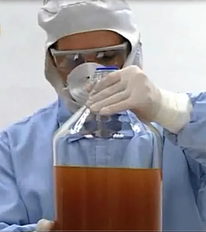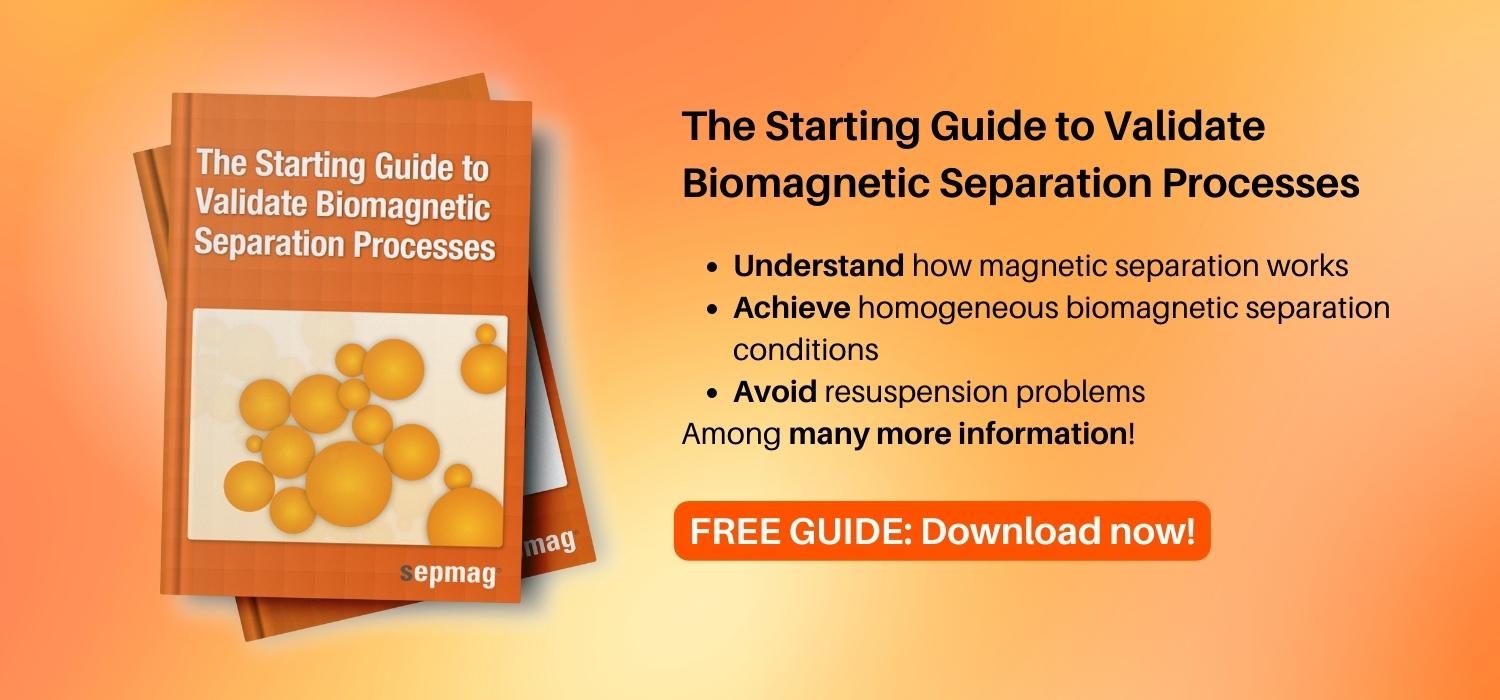One of the major problems of traditional magnetic bead separation technology is aggregation of the magnetic beads. Aggregation decreases the yield and also contributes to variability between batches.

This post is about magnetic bead separation and how to validate this process. If you are interested in this topic, and are willing to learn more about it, download our Free Guide The Starting Guide to Validate Biomagnetic Separation Processes:
What causes aggregation?
Traditional biomagnetic separation creates a magnetic force that is dependent on the distance from the magnet. In other words, beads that are far from the magnet are difficult to attract because of the low magnetic force. Often, this results in a great deal of material loss and an increase in separation time. A common way to rectify these problems is to increase the magnetic force by adding permanent magnets to the separator in order to pull more beads toward the magnets in a shorter amount of time. Doing this, however, only increases the aggregation problem.
Beads that are close to the magnets experience excessive magnetic forces for a longer amount of time. Beads exposed to high magnetic force over time tend to aggregate, causing a loss of bead activity. Sometimes the loss of bead activity is irreversible. In addition, resuspension of the aggregated beads is very difficult, requiring laborious sonication to first break up the aggregates. Increasing the magnetic force to pull beads in from farther away would clearly exacerbate this problem.
How can one avoid aggregation?
 A new technology used by Sepmag biomagnetic separation devices allows scientists and engineers to apply the optimum magnetic force to all the beads equally, ensuring homogeneous separation conditions. These conditions are gentle on the beads and allow for efficient separation without the aggregation and resuspension problems of traditional methods.
A new technology used by Sepmag biomagnetic separation devices allows scientists and engineers to apply the optimum magnetic force to all the beads equally, ensuring homogeneous separation conditions. These conditions are gentle on the beads and allow for efficient separation without the aggregation and resuspension problems of traditional methods.
The Sepmag separator also alleviates the problems of beads that are far from the magnet, since even these beads experience the same magnetic forces as the beads closer to the magnetic ring. No longer will scientists need to increase the force or the separation time to attempt to increase yield. No longer will scientists need to use sonication techniques to break up aggregated beads. Sepmag technology increases yield and decreases batch to batch variability without extra work.
If you found this article interesting and want to get a deeper insight in the topic of magnetic bead separation, make sure to check these articles from our blog:






